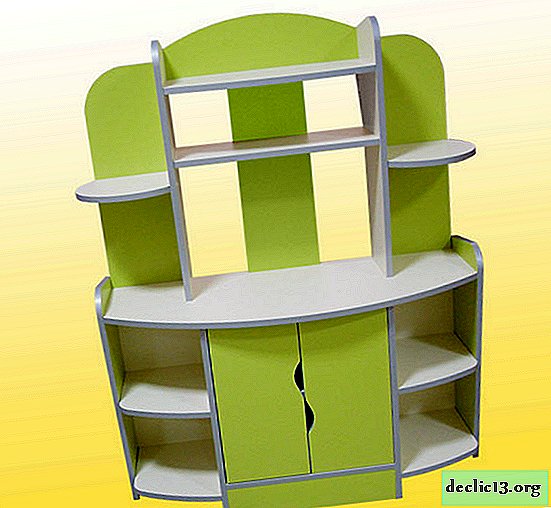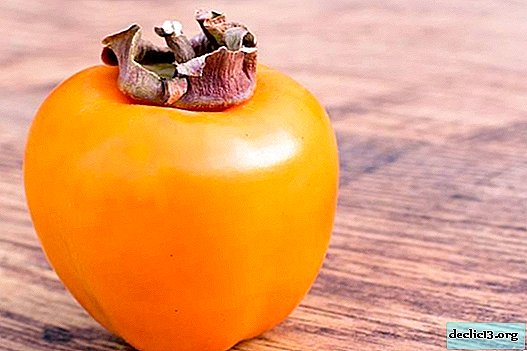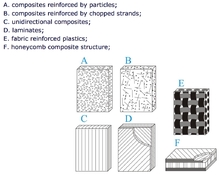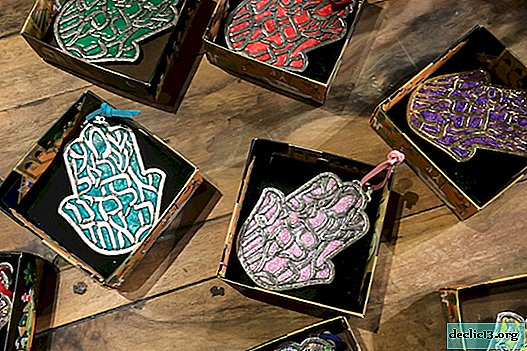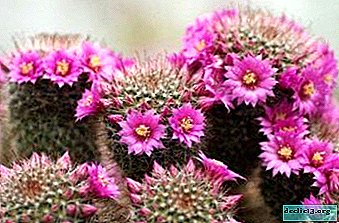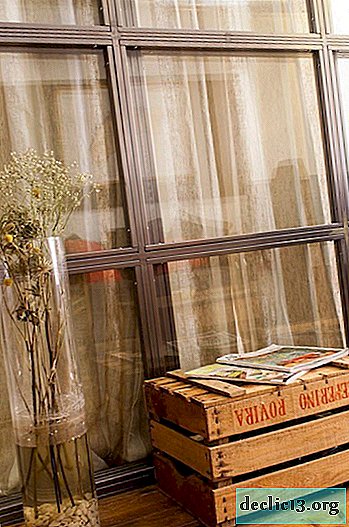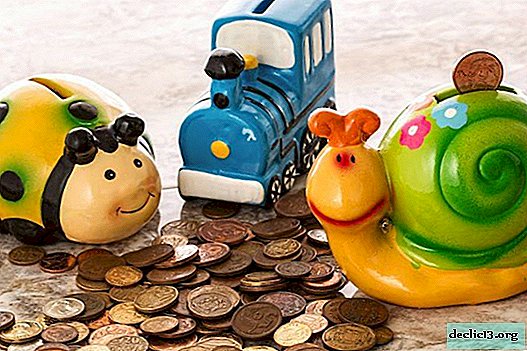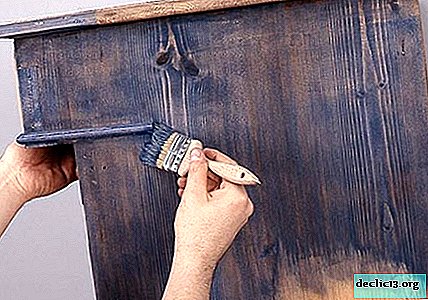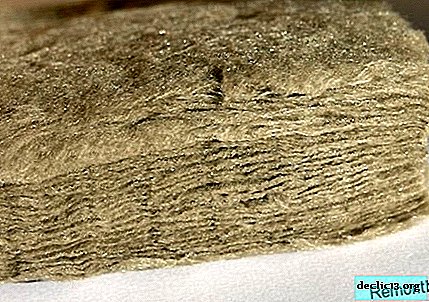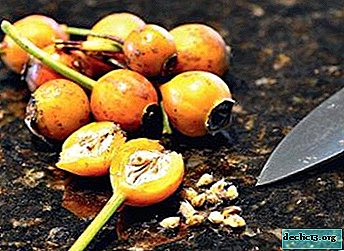Important facts about petunia seeds. How to choose in the store or get at home?
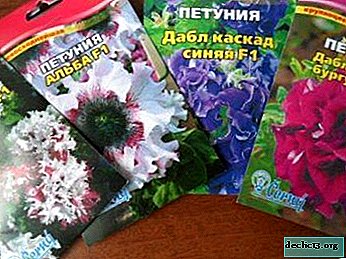
Today, petunia has become very popular among landscape designers and just amateur gardeners.
The delicate flower has a very rich color and species spectrum.
There are about twenty-five species of petunias, which sometimes differ greatly among themselves.
In our article you will see a lot of photos of petunias, and also find out where the seeds are located in this flower, how they look and how to use them for growing seedlings.
What kind of flower is this?
Petunia is an annual or perennial herb or shrub plant. Translated from Portuguese means "tobacco" for similarity with tobacco leaves. The Frenchman Jean-Baptiste Lamarck first discovered and described this flower in 1793 during an expedition to South America.
The roots of petunias are shallow, have a rod type and adventitious roots. The stems are rounded and green. As a rule, stems twist densely. The plant can be either stunted, about 20-30 cm, and tall, from 60 to 70 cm. The stems and leaves are strewn with short hairs.
Petunia flowers have a wide color palette, from pale white to light pink and purple, from lavender to almost black. Petunia flowers resemble a cone in shape, can be either large or small, simple and double. Most often, gardeners use this plant as an annual, and it is never grown as indoor.
Photo
In the photo below you can see beautiful petunias.





Breeding methods
- One way to reproduce most varieties of petunia is the seeds.
- The second method of reproduction is vegetative, namely cuttings. As a rule, varieties with double flowers and ampoule petunias are propagated in this way. And this is the most popular way. It is economical, simple and affordable even to the most inexperienced grower.
- The third way to grow petunias is seedlings. This is the easiest way to grow, but it is also the most expensive. Since the cost of one bush in our country is quite high, and not every gardener can afford to purchase it in sufficient quantities, this method has not gained popularity with us.
You will find all the details about breeding petunias in this material.
What does the plant seed look like?
After flowering is complete, a fruit appears on the plant - a box with two leaves and a size of 10 * 8 mm, filled with seeds. Petunia seeds are very small. Their size does not exceed 0.6 mm. Usually they are brown, less often sand. With proper storage, seed germination lasts 2–3 years.
How to get at home?
Growing seeds yourself, you need to remember that the lion's share of the seeds presented in stores are hybrids, and guess what flowers will be in the next generation is almost impossible. Secondly, petunia is a cross-pollinated plant, that is, it is pollinated with pollen from other plants. And, thirdly, not all flowers (mainly characteristic of double) tie the seeds.
And those seeds that appear, practically do not carry the terry gene. And, therefore, the probability of preserving the plant variety that you love is extremely low and tends to zero.
Petunia, although an unpretentious plant, but requires compliance with certain conditions. Namely:
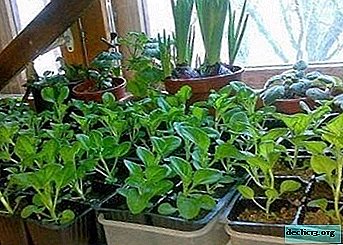 The container in which the petunia seeds are planted must be covered with non-woven material. This helps to create a microclimate more favorable for the growth and development of the plant.
The container in which the petunia seeds are planted must be covered with non-woven material. This helps to create a microclimate more favorable for the growth and development of the plant.- In order to grow a viable flowering plant, constant light is needed.
- Compliance with the temperature regime.
- Constant control of the earth, preventing the formation of a hard, dry crust.
- If the plant is very stretched, it is necessary to add it.
Petunia seeds fully ripen 60-90 days after flowering begins. A box appears in place of the flower. The number of seeds in a box can reach 10,000 pieces (extremely rare), as a rule it ranges from 100 to 300, but most often out of a number does not exceed 100 pieces. Since complete ripening prevents further flowering of the plant, then after the pre-designated bud has faded, it must be picked.
How to take the seeds, you also need to know. You need to collect them only by hand and from the boxes located below everything. There, the seeds are tied earlier, and therefore - more mature. When breeding seeds, it is important to collect on time. It is necessary to verify the maturity and the box itself. It should be slightly dried out and have a brown tint. Next, we open each collected box over a light surface so that the black peas and seeds are clearly visible.
Important! After opening the box, the seedlings must be dried for several days in a warm place.We suggest learning how to properly collect petunia seeds in this article.
How to grow seedlings?
Planting seeds for seedlings should begin in the second half of March, in a greenhouse - in April, and should be planted in open ground in May. But to get an early flowering plant should start planting seeds in February. Petunia is a warm and photophilous plant. Therefore, place the pots in a bright, warm place.
Petunia is sensitive to fluctuations in soil moisture and prefers well-drained, non-acidic soils. An excellent soil will be a mixture of hardwood, granular sand and peat. A good fertilizing for the flower during the preparation of the soil will be humus or compost.
A cache-pot, pot or box in which you decide to grow a plant is populated quite densely, about 65-70 plants per 1 square meter. For good growth and abundant flowering, petunia must be not only often watered, but also sprayed. Fertilizers should be applied to the soil no more than once a week, and alternate root and non-root top dressing.
 An example of a mixture for planting petunia seeds:
An example of a mixture for planting petunia seeds:
- 2 parts of well-rotted humus;
- 2 parts of turf or leaf land;
- 2 parts of lowland, well decomposed peat;
- 1 part of sand.
Sowing process:
- If the pH of the mixture is lower than 5.5, then lime must be added to it.
- All components are thoroughly mixed, sieved through a sieve (mesh size 3-5 cm) and disinfected by fumigation, steaming, etc.
- Then again sieved through smaller sieves (mesh size 0.5 cm).
- The largest fraction (screening) is poured into the lower part of the box and slightly compacted, the upper third of the soil layer is filled with a small fraction, it is carefully leveled and slightly compacted again.
A plant grown from seeds will bloom in about 70 days. In more detail, about how to grow seedlings of these beautiful flowers, we wrote in this article, and about the features of growing petunias from seeds, read here.
Where and for how much can I buy?
When choosing seeds in a store, you should rely only on the honesty of the producer, and proceed from what is indicated on the bag of seeds. Foreign manufacturers, American and Dutch, guarantee seed germination by 100%. But only the price of such professional seeds will significantly hit the pocket. Domestic seeds are cheaper, but the result is unpredictable. And here the question is not only in germination, but also in color, plant variety. Expectations are not always met.
Reference! Granule seeds are found. Almost always, these are hybrid plants. They are much more comfortable to plant, but because of the cocoon granules they sprout longer.You can buy petunia seeds in any specialized store for gardeners. Also, a large assortment of seeds is offered by online stores (semena-tut.ru, onsad.ru and others). In online stores, the spread in prices for a bag of seeds is very large, starting at 16 rubles. and end with 160 rubles. So the online store for the garden Onsad.ru offers seeds not only from domestic producers, but also from foreign ones, such as the USA, Czech Republic, Japan. Prices for imported goods starts from 50 rubles.
In Moscow, petunia seeds can be bought, for example, in the Russian Garden store. The minimum price of a bag of seeds is 16 rubles., The maximum is -100. But here only domestic manufacturers are represented.
The most popular place to buy seeds in St. Petersburg is the Seed House store. This store offers a wide range of seeds from various producers. Prices start at 6 rubles. for a bag.
Conclusion
Petunia is a very beautiful, colorful plant, not very whimsical, but requiring attention. If a gardener chooses this flower to decorate his flower beds, shows a little attention and patience, he will be rewarded with delightful long-blooming buds that attract the enthusiastic looks of passers-by.

 The container in which the petunia seeds are planted must be covered with non-woven material. This helps to create a microclimate more favorable for the growth and development of the plant.
The container in which the petunia seeds are planted must be covered with non-woven material. This helps to create a microclimate more favorable for the growth and development of the plant.